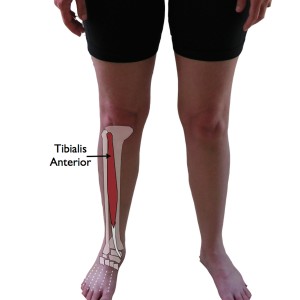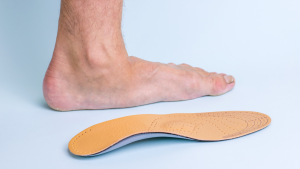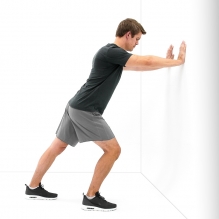What is a shin splint?
Shin splints are a common complaint in runners or athletes with sports that involve a lot of high impact movements like dancers, volleyball, basketball players, etc.
Usually, it presents as pain in the front of the lower leg, or the shin area. Sometimes, it may be called medial tibial stress syndrome (MTSS). Oftentimes, it’s caused by irritation of the tissues between the tibial bone and the muscles, and/or overuse of a lower leg muscle called the tibialis anterior. It can happen to just a single leg, or both simultaneously.
The tibialis anterior play major role in lifting your ankle upwards (dorsiflexion). Functionally, it helps with shock absorption and is a major contributor during ambulation.
Why do shin splints happen?
1) Footwear: If you run or exercise a lot without proper running or sports shoes, it puts additional stress on the muscles around the leg. Consequently, this can result in the overuse and irritation of the structures in the area, and pain in the shin bone.
2) Sudden change in activity: Abruptly increasing the difficulty in your exercise routine like training more frequently, for longer periods of time, or increased repetitions increases your chance of developing shin splints.
3) Muscle imbalance: Muscle weakness or tightness can influence the biomechanics of your stride and gait. As a result, the areas you place more weight on may change and increase the pressure on certain areas of the body like the shins.
4) Sports like dancing, running, soccer etc: Notably, these activities focus more on lower body movements that are high impact. Therefore, individuals who practice these sports may be more at risk for developing shin splints.
5) Flat Feet: Flat or pronated feet change the pull of muscles and weightbearing in the legs. As a result, this may create muscular imbalance and result in some muscles having to work harder, putting increased stress on them.
What are the signs and symptoms?
1) Dull, achy pain down the shin bone
2) Tender to the touch over the shin area, especially the inner portion
3) Swelling over the shin area
4) May experience redness on the lower leg after exercises
5) Exercise makes it worse while rest makes it better
How can shin splints be treated acutely?
Importantly, the RICE protocol is used often on sports injuries and works well on shin splints in the acute phase. RICE is an acronym that helps us remember what to do to treat our injuries.
1) Rest: Firstly, avoiding exercise for some time will allow muscles to recover and allow more efficient healing.
2) Icing: Secondly, icing on the shins will reduce inflammation, pain and swelling.
3) Compression: Additionally, compression bandages or braces can reduce stress on muscles and prevent pain.
4) Elevation: Finally, elevating the leg can help clear swelling and reduce inflammation from the leg.
How can shin splints be treated in the long term?
Physiotherapy is the first line of treatment for shin splints as it is a common sports injury. The following steps will help improve your pain.
Orthotics: Custom made insoles can correct the muscle imbalance and takes pressure off from overworked areas
Footwear: Proper runners or sports shoes are needed as a proper base of support to your ankle and leg. Then, this will help the muscles and joints absorb less pressure.
Stretching exercises: Ankle stretches will correct muscle length and after exercising, helps to clear byproducts of exercise that can make muscles sore. Eg. Calf stretch, soleus stretch, tibialis anterior stretch.
Massage: Self-massage or massage therapy on tender spots and the surrounding muscles will help reduce inflammation and reduce areas of high muscular tension.
Strengthening exercises: Strengthening certain group of muscles can make them more resilient, correct imbalances, and prevent pain. Eg. Strengthening exercises of the calves, quads, and glutes can help correct this issue, especially in areas of weakness.
Looking for treatment? Look for PhysioNow!
If you are experiencing leg pain or shin splints, you can get treatment quickly! Here at PhysioNow, we have many expert Registered Physiotherapist to help, with locations across the GTA including Burlington, Oakville, Mississauga, and Etobicoke. Book with PhysioNow today for your first assessment and treatment!






Leave a Reply